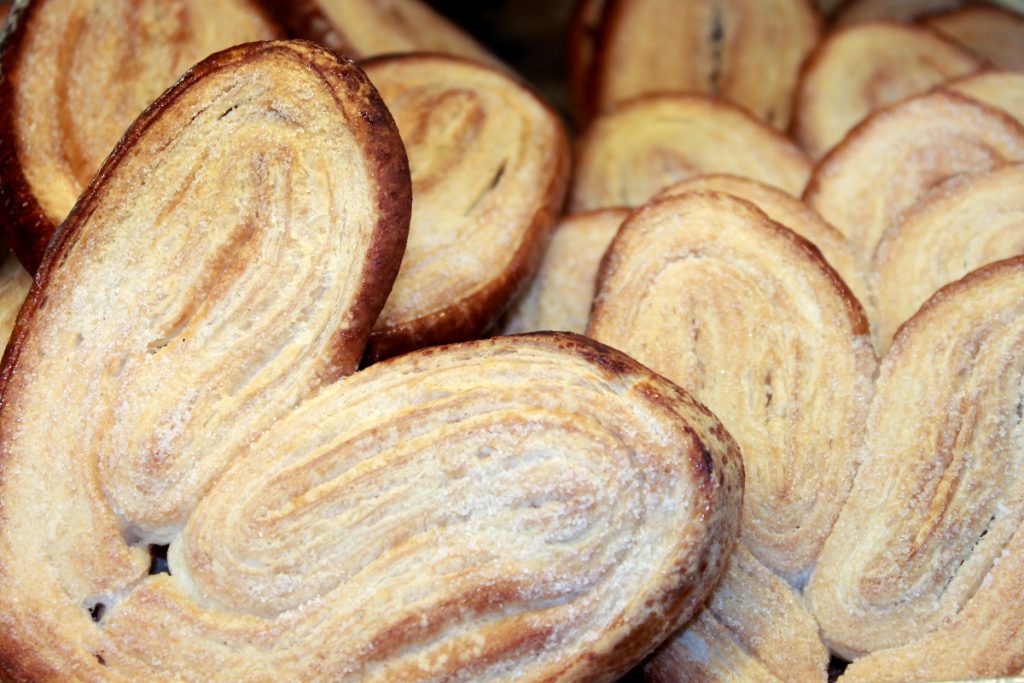Join us for a tour of the sweet bread of Mexico, Latin and South America as we take a new pastry each week to discuss and share history, our favorites, and other fun facts! Call store for availability.
Perhaps the second most known pan dulce after the concha is the oreja, translated “ear”. You may have encountered something similar in the French pastry – the palmier.
As one of our customers said – “It is simple but delicious!” Indeed it doesn’t have any filling or special seasoning, but this folded puff pastry is baked to sweet and crispy perfection. Better eat it over a plate to catch all the flaky layers and finish it off with a spoon!
The first written references to puff pastry appeared in a Spanish recipe book in the early 1600’s. But, as with many food traditions, there is a more colorful story. In the year 1645 a French painter and cook named Claudius needed to make something for his sick father who was prescribed a diet of only flour, water, and butter.
Claudius placed lumps of butter into his simple dough, folded it over several times and formed it into a loaf to bake. The master baker he was working with was very doubtful, thinking the butter lumps would melt and run out of the bread when baked. But when they removed the loaf from the oven, it had been puffed into hundreds of flaky layers!
Eventually Claudius left his rural hometown and went to Paris, where he worked at the Rosabau Patisserie and perfected his invention. When he moved to Florence Italy, he was hired at the famous Brothers Mosca’s pastry shop, who reaped the benefits of his invention and took credit for it.
It was said Claudius kept his secret to himself and always prepared his pastries in a locked room!
So there you have it..from the French perspective. Any Italians out there with a different version? ?
